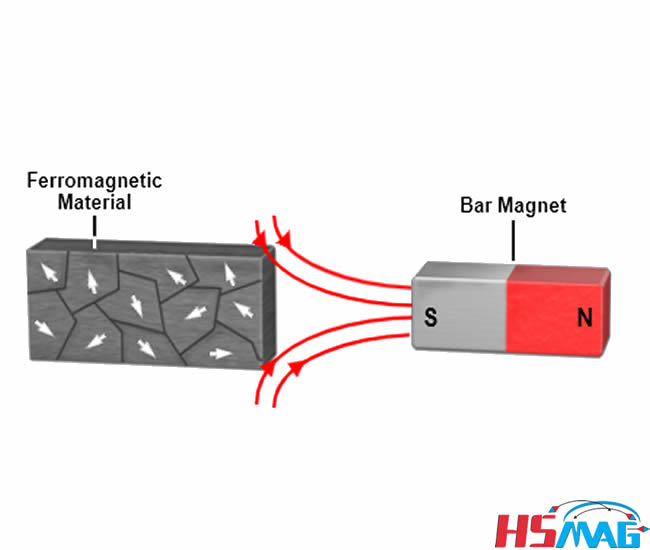In recent years, the intersection of electromagnetism and photonics has opened up new horizons in the study of ferromagnetic materials. One of the most intriguing inquiries in this domain revolves around the manipulation of magnetic domains using photons. This ambiguity presents an array of possibilities and challenges: can light not only influence the behavior of ferromagnetic materials but also govern the very structure of their magnetic domains? As we delve into this captivating nexus between light and magnetism, the implications of such interactions may not only amplify our understanding of basic physical principles but also pave the way for revolutionary advancements in information technology and materials science.
The concept of magnetic domains is foundational to understanding ferromagnetism. In ferromagnetic materials, such as iron, cobalt, and nickel, regions known as magnetic domains spontaneously align their magnetic moments due to quantum mechanical effects, particularly exchange interactions. Within these domains, the magnetic moments are uniformly oriented, but at the domain boundaries, adjacent regions may possess opposite orientations, resulting in a net magnetization that can be reoriented. Typically, external magnetic fields induce realignment of these domains, a mechanism employed in data storage technologies and magnetic sensors. However, the role of light in this dynamic interaction introduces a compelling twist to the traditional perspective.
The interaction between photons and magnetic domains is primarily predicated on the phenomenon of magneto-optics. This field examines how photons can interact with magnetic materials, giving rise to effects such as the Faraday rotation and Kerr effect. These phenomena showcase the ability of light to influence the orientation of magnetic moments, yet the full scope of how photons could control magnetic domains remains an active area of research. One playful question emerges: if photons can manipulate ferromagnetic domains, what kind of light would be most effective in orchestrating such intricate arrangements?
To address this question, it is crucial to explore the mechanisms behind photon-matter interactions. At the atomic level, when light interacts with ferromagnets, it can induce transitions between electronic states, leading to alterations in the magnetic ordering. Moreover, ultrafast laser techniques facilitate the study of these interactions on unprecedented time scales. For instance, femtosecond laser pulses are capable of imparting sufficient energy to drive transitions that realign magnetic domains almost instantaneously. Utilizing this ultrafast capability suggests potential methodologies for developing advanced data storage techniques that capitalize on the rapid reconfiguration of magnetization.
Theoretical models of photon-induced domain manipulation have garnered attention as researchers aim to elucidate the parameters influencing these processes. Essential considerations include wavelength, intensity, and polarization of light, all of which can affect the efficiency of domain realignment. Specifically, circularly polarized light can exert a torque on magnetic spins, thus creating an interesting link between the polarization state of light and the stability of magnetic configurations. There lies an implicit challenge in optimizing these parameters: how can one achieve selective manipulation of domains using specific photon characteristics while minimizing unintended effects?
In addition to challenges in manipulation, the interplay between ferromagnetic materials and photons extends implications beyond technological conveniences; it delves into fundamental physics. For instance, studying these interactions enhances our understanding of critical phenomena, such as thermal fluctuations and domain dynamics. Advanced simulations utilizing Monte Carlo methods and micromagnetic modeling delineate how light can influence domain configurations across different scales. As researchers probe deeper into these phenomena, they pose additional questions about the inherent stability of magnetic configurations when subjected to photon stimuli over time.
As the quest for understanding deepens, interdisciplinary collaboration proves essential. Physicists, materials scientists, and optical engineers must coalesce, forming a cogent research nexus to address the intricate questions posed by photon-magnetic interactions. Such collaborative efforts may lead to significant advances in spintronics, wherein the manipulation of magnetic domains using light could yield devices that operate faster and consume less energy than their electronic counterparts. The creations birthed from these inquiries could reshape paradigms surrounding data storage, signal processing, and beyond.
However, the road ahead is fraught with technological challenges. One pivotal aspect is the development of effective light sources that can provide the necessary control over light-matter interactions. Fiber lasers and other high-intensity laser platforms must become more refined to ensure coherent interactions over macroscopic distances in bulk ferromagnetic materials. Furthermore, the integration of photonic systems with existing magnetic devices necessitates innovative designs. Interfacing nanostructured materials with effective optical components may present a particularly fertile area for exploration, as the coupling between nano-magnets and light harness the interactive benefits of both realms.
As we stand at the precipice of these discoveries, the potential applications arising from the intersection of ferromagnets and photons are tantalizing. From novel magnetic sensors that can be tuned by light to next-generation memory technologies that utilize light for rapid data access and storage, the implications of light taking control of magnetic domains reverberate across multiple spheres of technology. The confluence of these two fields encourages not just fundamental exploration but also invites speculation about the future trajectory of magnetic materials. Will the light indeed reign over magnetic domains, or might it simply illuminate the complexities underlying this multifaceted relationship? The answers lie within the collaborative spirit of research, poised to illuminate our understanding of this enigmatic dialogue between light and magnetism.










